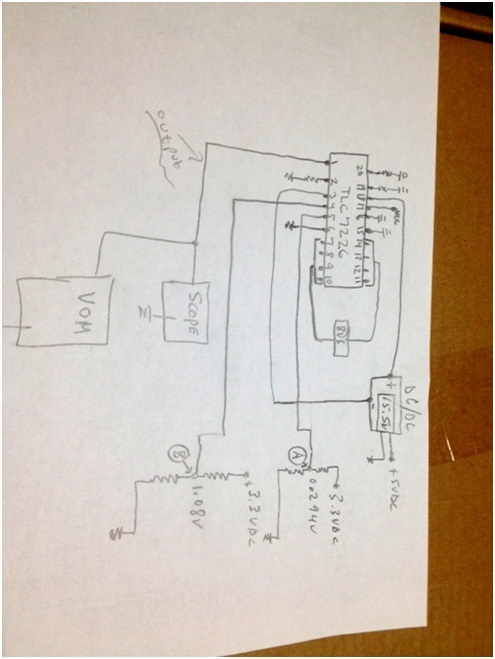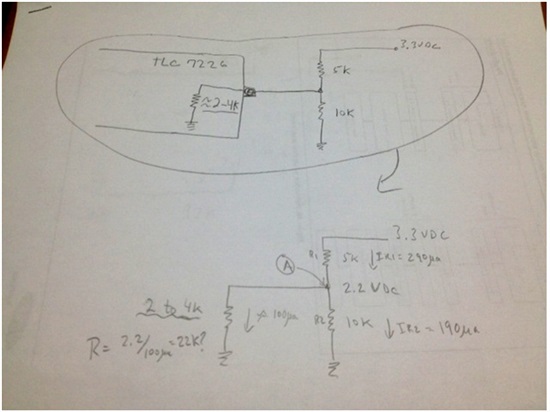Hello,
I would like to make a ramping voltage from approximately 0.3VDC up to approximately 1.0VDC.
To accomplish this I decided to try out the TLC7226C from TI. I was able to get this chip to ramp from 0 volts to any voltage up to 10V max. But now, I don't want to start from 0 volts DC. I would like to start from 0.3VDC and ramp up to 1.0 VDC.
Please view diagram #1 below with circuit. Based on schematic, I have point "A" which when not connected to pin #5 of the TLC7226C part reads 0.294 VDC. But as soon
as I connect point "A" to pin #5 of the TLC7226C, I read a voltage at pin#5 of .54volts DC. ??? Why?
Isn't pin#5 a high impedence input for the analogue ground... so why doesn't it read 0.294 VDC as intended by point "A"???
DIAGRAM#1:
Another problem I have is interpreting what the spec sheet is really saying... please consider the following!!!!
Still referring to the TLC7226 part and its spec sheet at:
http://www.ti.com/lit/ds/symlink/tlc7226.pdf
If you go to p.4 of the data sheet and look for:
ri(ref) Reference input resistance 2 kΩ min and 4 kΩ typical.
Questions in reference to diagram#2 below:
1) Does this mean that pin#4 of the TLC7226 part has a typical input resistance from 2kilo ohms to 4 kilo ohms?
2) Please refer to the attachment below where I tried to calculate the actual input resistance at pin #4. As a test, I have created a voltage divider to provide 2.2V as my reference voltage. I have measured the currents in the circuit. If I measure 2.2V at point "A", according to ohms law why is it that the calculation of the internal resistance comes out to 22K when the spec sheet says from 2 to 4 k???
DIAGRAM #2:
confused
All help very appreciated!
PS. I am trying to include attachments in my post but they won't show???
r




